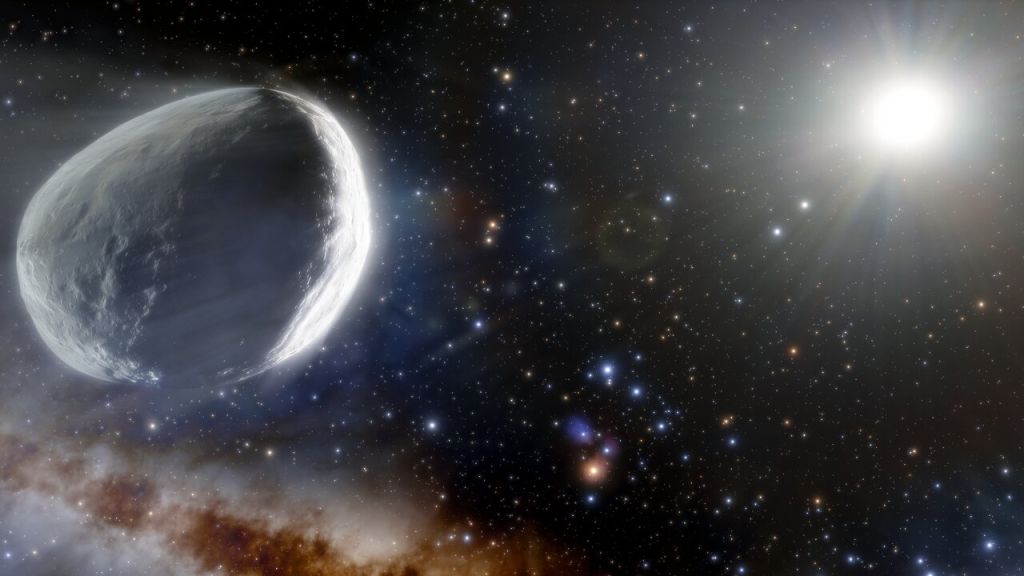NOIRLab / NSF / AURA / J. da Silva
Illustration of comet Bernardinelli-Bernstein
–
With a diameter of 136 kilometers, the core of C/2014 UN271 – named Bernardinelli-Bernstein – will be about 50 times larger than the average of comets discovered to date.
Bernardinelli-Bernstein is not on Earth’s path: scientists have already guaranteed that the closest the comet will get to the Sun is at a distance of 1.6 billion kilometers, something that will only happen in 2031.
But as the object approaches, astronomers take the opportunity to study it in detail.
Recently, a team of researchers used the Hubble Space Telescope to peer through the rock’s fiery coma and directly observe its icy “heart”. The observations allowed the scientists to identify a bright spot of light which corresponds to the comet nucleus.
according to Live Sciencethe team used a computer model to digitally remove the glow, and the resulting data showed that the core is about 50 times bigger than typical comets seen in the inner Solar System.
The analysis also made it possible to determine the color of the comet’s icy core. “It’s big and blacker than coal“, said study co-author David Jewitt in a statement.
The comet was first accidentally observed in 2010, when it was more than 4.8 billion kilometers from the Sun. Since then, C/2014 UN271 has attracted the attention of scientists.
With an elliptical orbit, the comet takes more than 3 million years to complete one revolution around the Sun. Today, is less than 3.2 billion kilometers of our Sun, almost perpendicular to the plane of the Solar System.
O scientific article was published this month in The Astrophysical Journal Letters.
–
–
–

